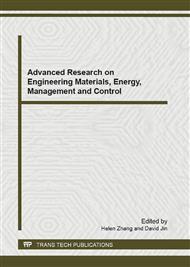p.330
p.334
p.338
p.342
p.347
p.352
p.355
p.359
p.364
Application of the Regularization Chaos Prediction Model in Aero-Engine Performance Parameters
Abstract:
Based on the research of complexity and non-linearity of aero-engine exhaust gas temperature (EGT) system, a regularization chaotic prediction model was proposed to build short time forecasting model of EGT. In this paper, in order to gain the best parameter to improve the accuracy of the forecasting model, a simple search algorithm arithmetic was adopted. The simulation analysis shows that the proposed forecasting model obviously exceeded the traditional chaotic forecasting model on prediction accuracy. Therefore, this arithmetic is efficient and feasible for a short-term prediction of aero-engine exhaust gas temperature
Info:
Periodical:
Pages:
347-351
Citation:
Online since:
January 2012
Authors:
Price:
Сopyright:
© 2012 Trans Tech Publications Ltd. All Rights Reserved
Share:
Citation:


